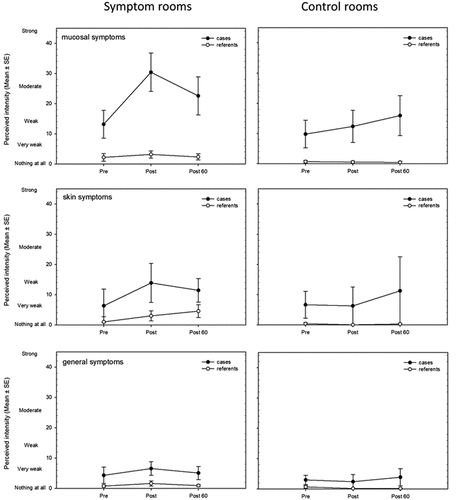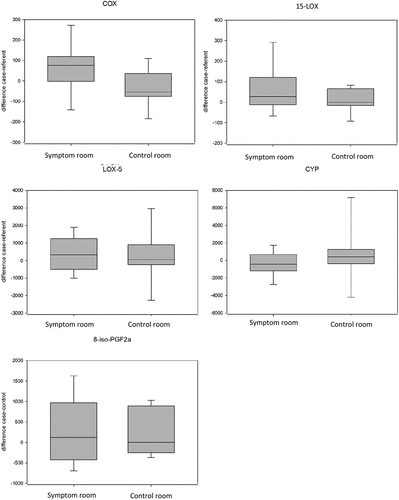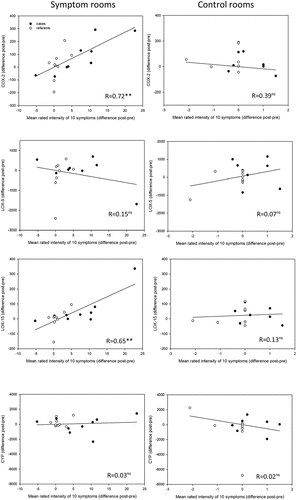Figures & data
Table 1. Descriptive data of the participants.
Table 2. The difference in oxylipin and 8-iso-PGF2α concentration between cases and referents in symptom rooms (SR) and control rooms (CR). The oxylipins were grouped into four groups depending on their biosynthetic pathway. Z-values according to Wilcoxon signed-rank test.
Figure 1. Mean (±Standard error, SE) reported intensity of mucosal, skin and general symptoms in symptom rooms (SR) and control rooms (CR).



